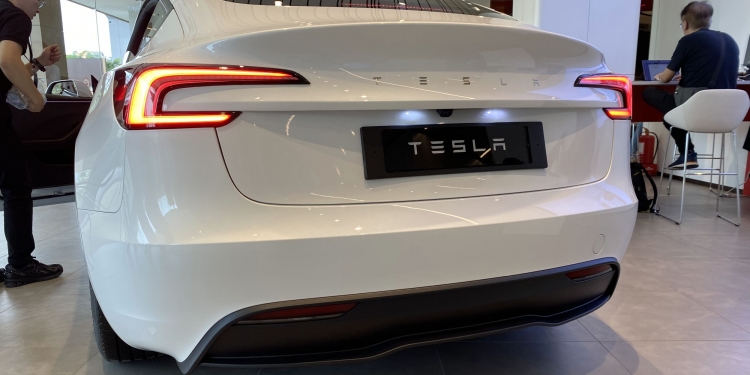Now that the Cybertruck has finally been delivered to its first customers, Tesla’s focus will now turn to its future products (well, that and the challenging ramp-up of its stainless steel pick-up’s production). Sorry to disappoint, Roadster order holders, but it looks like we’ll be getting a cheaper Tesla first.
Not much is known about this entry-level model, although a USD 25,000 (around RM116,853) price tag has been floated around. However, its existence has been acknowledged by the company several times, most recently by its boss Elon Musk in an interview with automotive engineer Sandy Munro.
When asked about it, Musk said he couldn’t comment on something that would affect the financials of a publicly-traded company like Tesla. But he did say that development of the “low-cost electric vehicle” is “quite advanced,” adding that “I review the production line plans for that every week.”
Musk also alluded to a “revolution” in manufacturing that will enable the “really high volume” production that would help drive down costs. “I think that the revolution in manufacturing that will be represented by that car will blow people’s minds,” he said.
This production process may be referring to the “unboxed” system revealed during Tesla’s 2023 Investor Day event in March, in which large components like the roof, side panels and front and rear subframes are assembled and painted individually before being put together. This streamlines the traditional, relatively inefficient production process, whereby the body panels are bolted to the welded monocoque for paint before being taken apart again for final assembly.
Production will kick off at the Gigafactory Texas first, Musk said, followed by the upcoming plant in Mexico. Presumably, production at Tesla’s facilities in Shanghai and Berlin for export markets will come later.
Again, not much is actually known about the car, but it will likely introduce several technologies pioneered on the Cybertruck, including an 800-volt electrical and 48-volt accessory architecture, vehicle-to-load (V2L) functionality and a steer-by-wire system that reduces the number of turns lock-to-lock.








